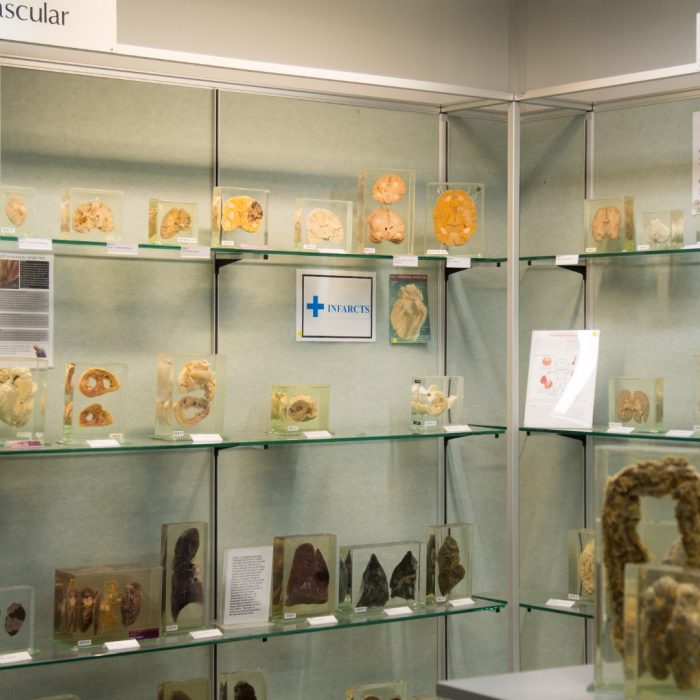Accessibility

Accessibility at the Museum of Human Disease
-
Accessible parking can be accessed via Gate 11 on Botany Street. The open-air Botany Street parking station has several accessible parking spaces and is less than 50m from the museum entrance. A map and information about parking locations can be found here.
-
The museum is accessible for wheelchair and mobility aid users. Upon arrival to the museum, please call us on (02) 9065 0330 and a member of staff will meet you in the building foyer and provide lift access. Alternatively, if you are visiting with someone who can enter via the stairs, they can let us know that you need lift access.
-
Wheelchair accessible toilets are located on Level 1 in the Samuels Building - a staff member can assist you locate them. The bathroom has a wheelchair accessible toilet with auto-opening door. More details of accessible toilets on the Kensington campus can be found here.
Baby changing facilities are located on Level 1 in the Samuels Building. Please speak with a staff member if you need this facility and they will provide access for you. A map of the parent facilities on the UNSW Kensington campus can be found here.
If you require a prayer space while visiting the Museum, a list of prayer spaces can be found here.
If you need to leave the museum to access any of these facilities, let a staff member know and we will ensure that you can enter again on the same day for free.
-
Assistance animals are warmly welcomed in the museum. A water bowl is available if needed. The nearest green space is the Michael Birt Lawn, 150m from the museum when walking towards the UNSW High St light rail stop.
-
The museum can be busy and loud, particularly when school or university student groups are visiting. Our displays include video with sound. If you would prefer to visit us at a quieter time, please call us to discuss the best options for you.
If you have specific accessibility needs or concerns about visiting the museum, please call us on (02) 9065 0330 or email us at diseasemuseum@unsw.edu.au so that we can ensure that you have the best possible experience.
Before visiting, some visitors may like to read the social narrative for the museum, found here. Social narratives are stories that explain a social situation or event and can be useful for individuals with cognitive disabilities, autism or other cognitive or sensory needs.
A visual guide to the museum can help you prepare for your visit. The visual story can be found here.
A sensory guide to the museum can be found here.
Each of our specimens has a QR code on the label with information about the specimen and patient history that is suitable for text-to-speech readers.
-
The Museum of Human Disease is a proud supported of the Sunflower Hidden Disabilities Program. Staff members wearing the Sunflower badge will be more than happy to assist you during your visit.
The Museum of Human Disease is a NSW Companion Card affiliated business.
Visiting
Opening hours
Weekdays: 10am - 4pm
Weekends: Closed
Public holidays: Closed
Prices
Adults - $10
Child - $5
Concession - $5
Include senior card, commonwealth pension cards, student cards.
Teachers & UNSW staff and students - Free
Find us here
Ground Floor Samuels Building UNSW, Sydney NSW 2052
Contact us
Email: diseasemuseum@unsw.edu.au
Phone: 02 9065 0330
